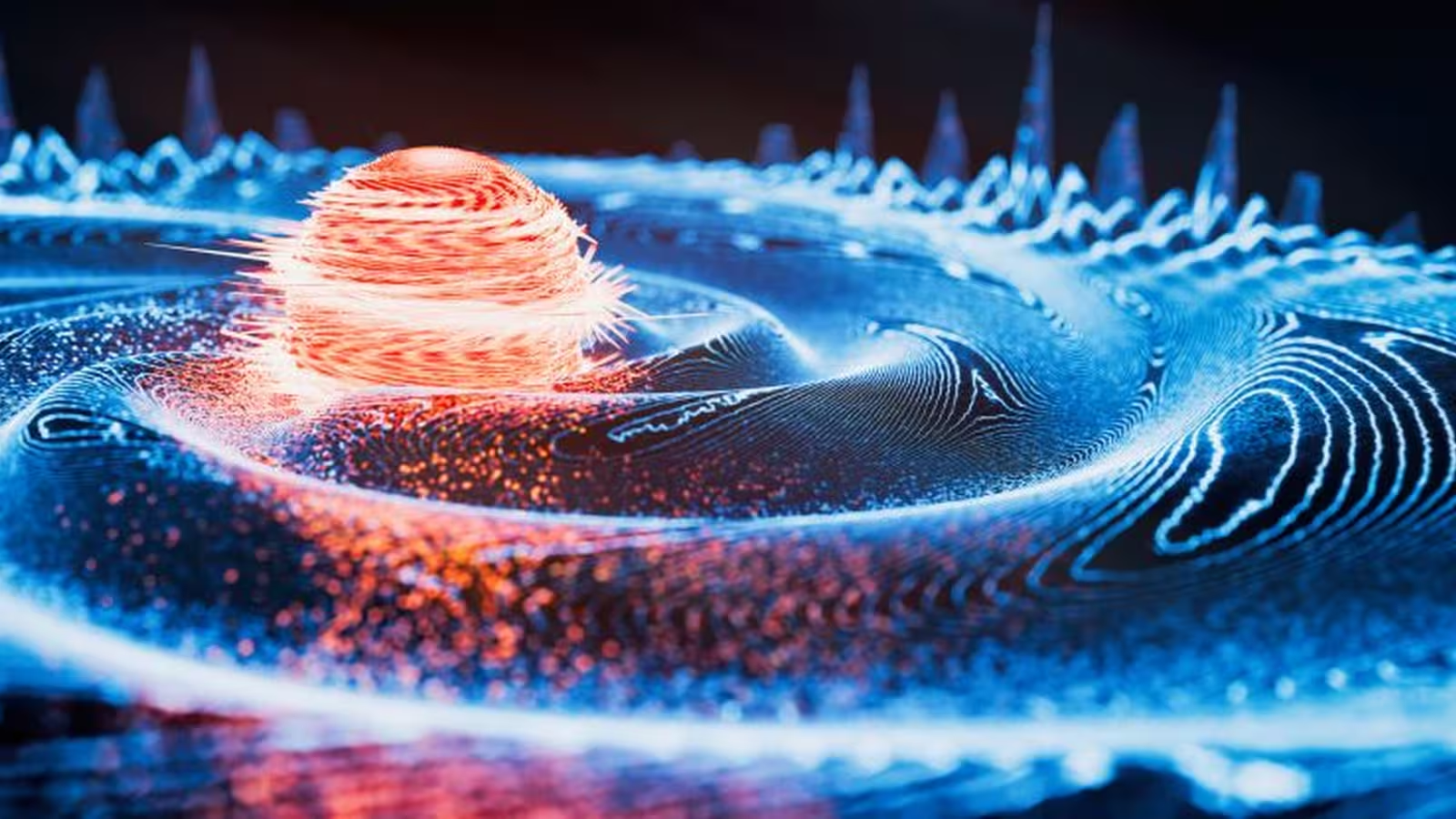5 Minutes
Ripples in space-time—gravitational waves—may have done more than signal violent astrophysical events. A new theoretical proposal argues these tensor-mode fluctuations could have driven the Universe's earliest rapid expansion and produced the primordial density differences that later became stars, galaxies and black holes. By replacing an unobserved hypothetical field with gravity and quantum fluctuations, the model aims for a simpler, testable account of cosmic origins.
Scientific background: inflation, the inflaton problem, and surprising observations
The standard cosmological picture invokes a short epoch of exponential expansion called inflation, which smoothed and stretched the Universe shortly after the Big Bang (about 13.8 billion years ago). Conventional inflationary models typically rely on a scalar field—often called the inflaton—to power that expansion and to seed small variations in density that later grow into cosmic structure.
Although inflaton-driven models fit many observations, they rest on a particle or field that has not been detected in the laboratory or elsewhere. Compounding the tension, recent observations from the James Webb Space Telescope (JWST) have revealed abundant, massive galaxies at earlier times than some models predicted, prompting researchers to revisit assumptions about how quickly structure could form in the young Universe.
New approach: de Sitter space, tensor perturbations and gravitational waves
The new work begins from a simplified, observationally consistent cosmological background known as de Sitter space—a solution of general relativity appropriate for an accelerating early Universe. Within this setting, quantum fluctuations of the metric itself generate tensor perturbations: gravitational waves created by the quantum turbulence of space-time.
Instead of invoking a new scalar field, the authors show how these tensor-mode fluctuations can both drive expansion and induce inhomogeneities in the primordial plasma. In other words, gravitational waves would not only be passive ripples but active agents that redistribute energy and density during inflationary dynamics. Over time, those density contrasts can collapse under gravity to form the seeds of the first stars, galaxies and black holes.
How gravitational waves create density fluctuations
Gravitational waves carry energy and momentum and can produce anisotropic stresses in the early Universe. When tensor perturbations are amplified by the expanding de Sitter background, they can generate measurable variations in local energy density. These induced fluctuations act like the usual scalar perturbations in standard inflationary scenarios, providing the initial over-densities that later grow by gravitational instability.
This mechanism relies on known physics—general relativity and quantum field theory—rather than a new, unobserved particle. As the study's lead author, theoretical astrophysicist Raúl Jiménez (University of Barcelona), emphasizes, the appeal lies in replacing model-dependent speculative elements with gravitational and quantum effects that are, in principle, verifiable.
Observational tests and related experiments
A crucial strength of the gravitational-wave-driven proposal is that it makes distinct observational predictions. The distribution and amplitude of primordial tensor modes affect the polarization of the cosmic microwave background (CMB), producing characteristic B-mode signals. Experiments aiming to measure CMB polarization at high sensitivity—such as Simons Observatory, CMB-S4 and other next-generation projects—could constrain the tensor contribution.
Complementary probes include direct searches for a stochastic gravitational-wave background with space interferometers like LISA and ground-/pulsar-timing experiments (LIGO/Virgo/KAGRA, NANOGrav, IPTA). If a primordial tensor background with the required properties exists, its spectrum and amplitude should be detectable or at least tightly constrained by these facilities.
Connection to JWST and early galaxy formation
If gravitational waves seeded larger initial density contrasts than standard scalar-driven inflation predicts, that could help explain the JWST detections of unexpectedly massive galaxies at high redshift. By accelerating the assembly of structure, a tensor-driven mechanism might reduce the tension between observations and conventional timelines for galaxy formation.
Implications, limitations and next steps
If validated, the model would reduce reliance on an unspecified inflaton field and recast inflation in terms of tensor modes arising naturally from quantum gravity effects in an expanding background. However, the proposal requires detailed numerical work and careful comparison with precision cosmological data. Key tasks ahead include calculating the predicted scalar-to-tensor ratios, the shape of the primordial power spectrum, and the imprint on CMB polarization and large-scale structure.
Future observational constraints from CMB polarization, stochastic gravitational-wave searches, and continued high-redshift galaxy surveys will be decisive. The model’s falsifiability—through measurable differences in tensor signatures—makes it attractive within scientific practice.
Conclusion
A new theoretical framework proposes that gravitational waves, generated by tensor perturbations in an early de Sitter-like Universe, could have both driven cosmic inflation and produced the primordial density variations that seeded the first cosmic structures. By relying on gravity and quantum fluctuations rather than an unobserved inflaton field, the idea aims for conceptual economy and observational testability. Upcoming experiments in CMB polarization and gravitational-wave astronomy, together with deep-sky surveys such as JWST, will be essential to test whether the Universe’s earliest evolution was sculpted by space-time ripples.
Source: journals.aps


Leave a Comment